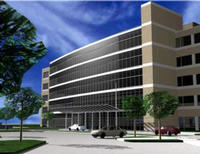
The blog will begin a new series on facility design principals. Please watch for the building and header for future articles.
Topic 1: Flexible. Healthcare facilities represent the workshop for the most highly skilled professionals in America. Clinics, Hospitals, Nursing Homes, Diagnostic Facilities and the like bring together highly trained professionals to deal with the most intimate aspects of our humanity. Yet, in the end, they represent a strategic asset and not the end product of our endeavors. As a contribution to the cost structure, facilities represent less than 6% to 10% of the overall expense of a healthcare enterprise (using standard accrual accounting rules).
Flexibility, then, encompasses the notion of design whereby the building itself never detracts from the care giving processes occurring within it. Neither for the patient, nor the care giver.
Some examples of flexible design include:
- structural elements (supporting columns, vertical chases, HVAC systems, etc) that are placed so that building modification can be made with minimal disruptions to ongoing operations of the rest of the building occupants.
- finish elements (walls, ceiling, etc) are designed to move in standard, yet modular elements so that programs can be customized within a building with our radical expenses or creating dramatic work-arounds for the program
- quality of construction needs to be sufficiently high that room use can be converted easily (e.g. easy to create negative pressure rooms located conveniently, exam rooms converted to procedure rooms with quick access to adequate electrical and other mechanical systems support)
- vertical and horizontal circulation should allow for flexibility in the movement of staff, supplies and patients/visitors.
Think of it this way, you'll live with the building long after you've retired the 25 year bonds (or mortgage) that you took out to pay for it, so don't burden the next generation with antiquated building that can't change with the changing tide of medical and nursing practice.



No comments:
Post a Comment